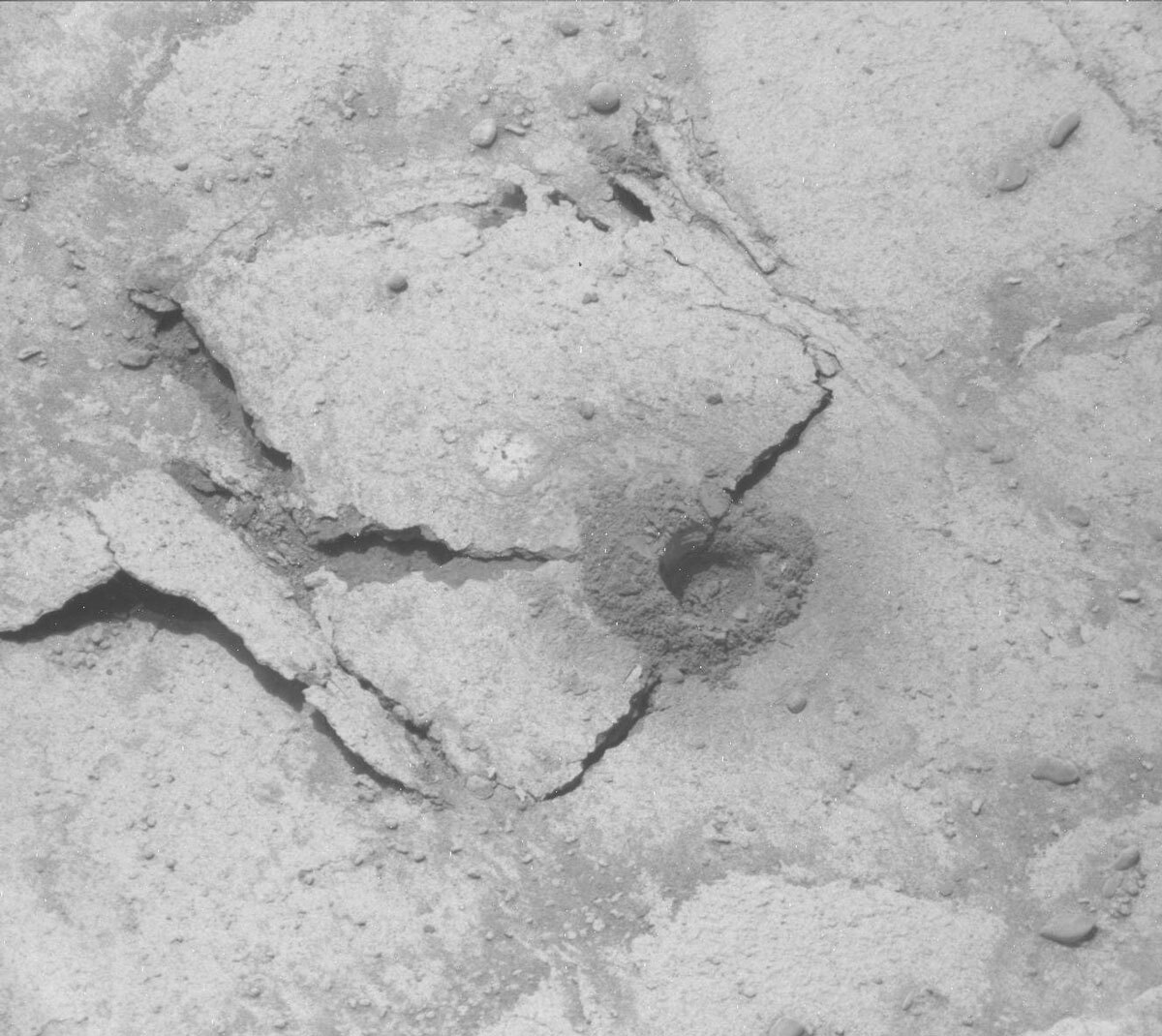2 min read

The tactical operations team was very happy this morning because it appears that a sample of the Tapo Caparo bedrock was successfully acquired! Although the target rock slab fractured during drilling, all indications are that enough sample was collected to allow analysis by the CheMin and SAM instruments. So the primary goal of the Sol 3755 is to drop some of the drill sample into CheMin for analysis. But first, several remote science observations are planned. Mastcam will acquire a 2-frame stereo mosaic of the steep, sandy "Rio Unini" surface at the base of Chenapau to look for possible changes since it was imaged on Sol 3748. Mastcam multispectral observations of foreign stones (rocks that appear to have been moved to their present locations from somewhere else) "Tucupita" and "Tamanaco" are also planned, along with a 6x3 stereo mosaic of sedimentary structures in "Chenapau Valley." Then Navcam will search for dust devils and ChemCam will shoot its laser at the wall of the drill hole and measure the spectral reflectance of the Tapo Caparo drill tailings. The Right Mastcam will document the ChemCam laser spots and take a 6x8 stereo mosaic to extend the coverage of the nearby "Tefe" sedimentary laminations before the arm is used to feed a couple sample portions to CheMin. After taking a nap, the rover will wake up to acquire MARDI and Navcam images during evening twilight, then take another nap before the overnight CheMin analysis begins. Of course, we are all interested to hear what CheMin discovers about the minerals in Tapo Caparo!
Written by Kenneth Herkenhoff, Planetary Geologist at USGS Astrogeology Science Center







